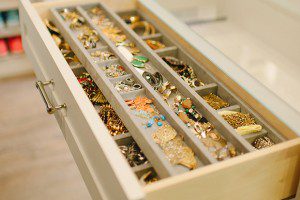How to Clean Your California Closets System: Cleaning Products & Tips
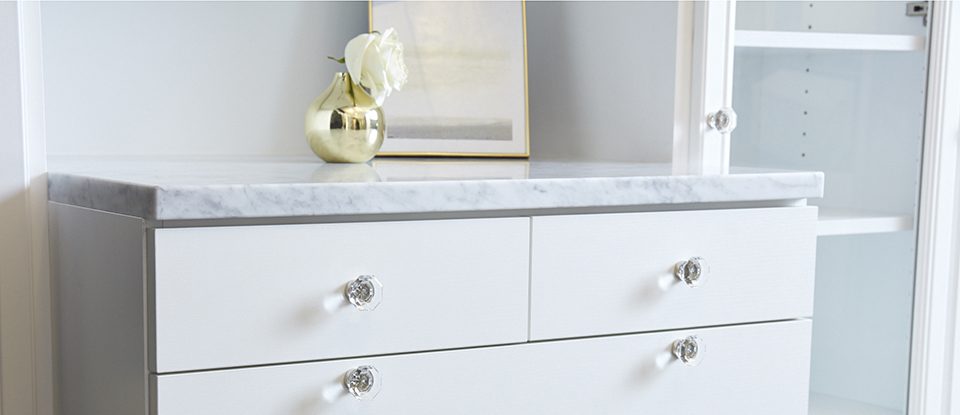
Once your system is installed and ready for use, you’ll want to properly maintain it. Our systems are designed to remain flawless for years to come with a little regular upkeep and the right cleaning products.
To help your system stay as stunning as the day it was put into your home, follow these guidelines for washing its various components and materials.
Routine Cleaning
When it comes to general upkeep, a mild, non-oily cleanser (such as Method or Green Works) will easily remove most dust, fingerprints and smudges from your system’s surfaces.
After cleaning, be sure to thoroughly rinse all surfaces with a clean, slightly damp cloth, and then dry with a soft, clean cloth. This crucial step is the most important: standing moisture is the single greatest cause of damage to any laminate surface, so you want to ensure that every surface is dry post-cleaning.
It’s also important to know that some cleaning products will damage California Closets’ finishes. Avoid using steel wool, acidic or abrasive cleaners, oven or rust cleaners and cleaners containing lye, acetone, gasoline, lacquer thinner or other similar products when cleaning your system. It’s also best to avoid using products that contain oil, as they could leave surface streaks as they dry.
While you may think you know what’s in your cleaner, we recommend double-checking the active ingredients in any product before using it on your system for potentially harmful chemicals. Do not use solvents such as acetone, ammonia, amyl acetate, benzene, butyl acetate, butyl alcohol, carbon tetrachloride, caustic soda, cellu-solve, chlorinated solvents, chloroform, cresols/phenols, dichloromethane, ethyl acetate, gasoline, glacial acetate acid, halogenated solvents, ketones, methyl alcohol, methyl ethyl ketone, thinners, toluene or xylene.
Door and Drawer Fronts
Wipe down sliding closet doors and drawer fronts with a slightly damp cloth using a solution of 5 percent soap and 95 percent water. After wiping any excess soapy residue, dry the fronts with a soft, clean cloth.
If you’re just dusting your system, only use a soft, clean cloth — do not use a chemical cleanser like wax furniture polish, abrasive products, bleach- or chlorine-based cleaners, multi-purpose cleaners, dilutes, alcohol or anything similar.
Ecoresin® Insert Panels
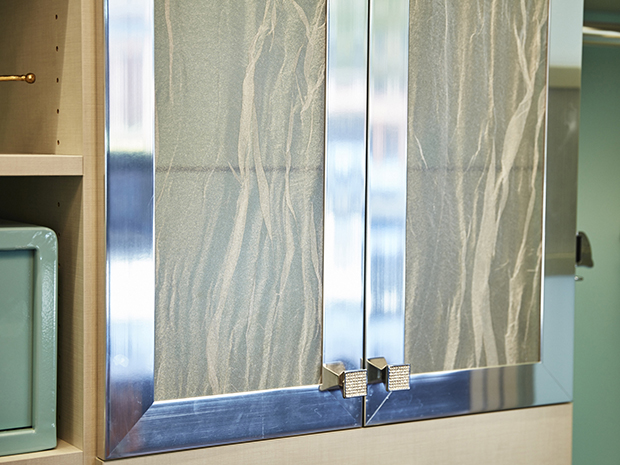
Remove any excess dust and dirt with a soft cloth or sponge that has either a solution of mild soap and water or a solution of 50 percent isopropyl alcohol and 50 percent water. Then, use a cloth that’s slightly damp with lukewarm water to wipe down your panels so that no excess moisture can soak into seams or joints.
Glass
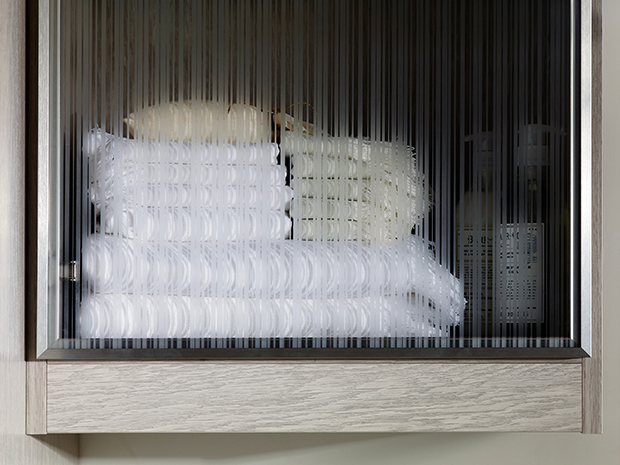
Both our Italian Designer and Printed glass should only be cleaned when cool to the touch and out of direct sunlight.
For Italian Designer glass, use a soft cloth and a solution of one part vinegar to ten parts clean water (or Windex Multi-Surface Cleaner) to remove dirt and grease. Then, lightly dry the surface with a soft, clean cloth. Any stubborn dirt should be lightly sponged off, being careful not to scratch the surface. All traces of water and cleaning solution must be removed from the glass and frame.
For Printed glass, use only a soft, damp cloth with mild dish soap and water to remove dirt and grease while applying very light pressure. Dry with a soft, clean cloth, again using only light pressure. Any stubborn dirt should be lightly sponged off, being careful not to scratch the surface. (Excessive wiping under moist conditions could also cause the decorative surface to lose adhesion.) All traces of water and cleaning solution must be removed from the glass and frame to prevent damage.
Some further words of caution:
- Do not use metal scrapers, blades or steel wool on glass surfaces
- Avoid household cleaners and abrasives
Deep Textured Panels
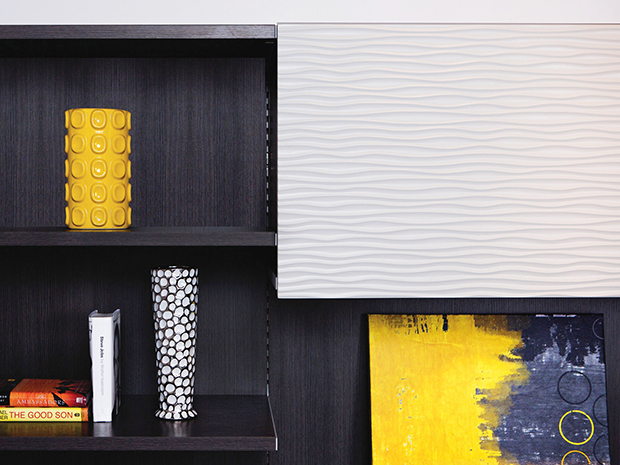
When cleaning deep textured panels, first use a soft cloth and mild soapy water to remove dirt and grease. Then, rinse immediately with a clean cloth and dry with another clean, soft cloth, using light pressure. Avoid vigorous rubbing, as this tends to raise glossy spots, marring the surface effect of the panels.
If chemical or staining liquids are spilled on the panels, wipe them off immediately and wash the surface with soapy water, rinsing several times to eliminate any residue.
Some further words of caution:
- Do not use scouring and abrasive agents, such as abrasive powders, scouring pads or steel wool
- Do not use polish, washing powder, furniture cleaner or bleach
- Do not use detergents with strong acids and acidic salts
- Do not use steam cleaning equipment
- Do not use strong soaps, detergents or liquid wax cleaners with dirt-cutting agents on wood finishes
High-Gloss Fronts
For best results, clean high-gloss acrylic fronts with a wet microfiber cloth or chamois and mild soap mixed with water. Never use a dry cloth on our acrylic finishes. Apply Ultra Gloss Superpolish + DGS, NOVUS No. 1 Polish or Plexus Plastic Cleaner on a weekly basis to keep acrylic in optimum condition.
Some further words of caution:
- Do not use household cleaners and abrasives
- Always check the active ingredients of your cleaners to be sure there are no potentially harmful chemicals
- Do not use paper towels, brushes, scourers or scrapers
- Do not use most solvent-based cleaners
Chroma Countertops
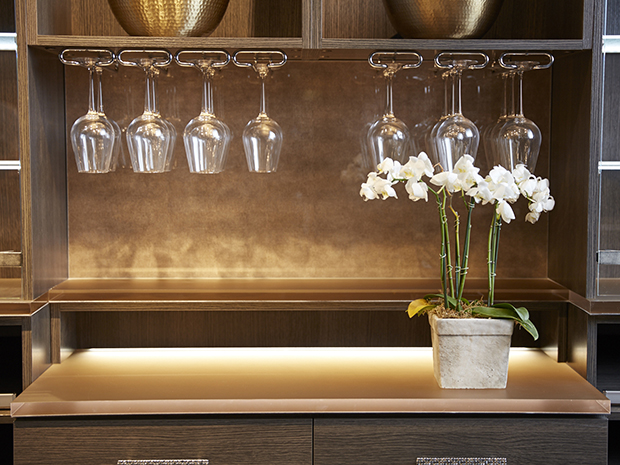
Chroma, like all thermoplastic materials, should be cleaned periodically. A regular cleaning program will help maintain the aesthetic and life of the material. Use a product like Novus No.1 or Brillianize Plastic Cleaners: Both are designed specifically for use on plastics, and they can also help the material resist finger marking and static.
When cleaning your Chroma countertops, first remove dust and dirt with a damp, soft cloth or sponge and a solution of mild soap and liquid detergent with water. Then, rinse or wipe the Chroma thoroughly with a soft cloth that’s been saturated in lukewarm water. For more stubborn stains, dirty spots or grease, surface cleaners like Fantastik or Formula 409 also work well. After each of these steps, be sure to rinse the surface thoroughly with a soft cloth that’s been soaked in lukewarm water, and then blot (do not rub) with a clean soft cloth before drying with another clean soft cloth. Rubbing the surface with a dry cloth can scratch the material and create a static charge.
Some further words of caution:
- Do not use squeegees or scrapers, as they may scratch Chroma surfaces
- Do not use scouring compounds or solvents, such as acetone, gasoline, benzene, carbon tetrachloride or lacquer thinner
- Do not use abrasives or highline alkaline cleaners
- Do not rub the surface with a dry cloth or a cloth of synthetic fiber, such as rayon or polyester, as it may scratch the surface
- Do not use Windex or glass cleaner
High Gloss Acrylic
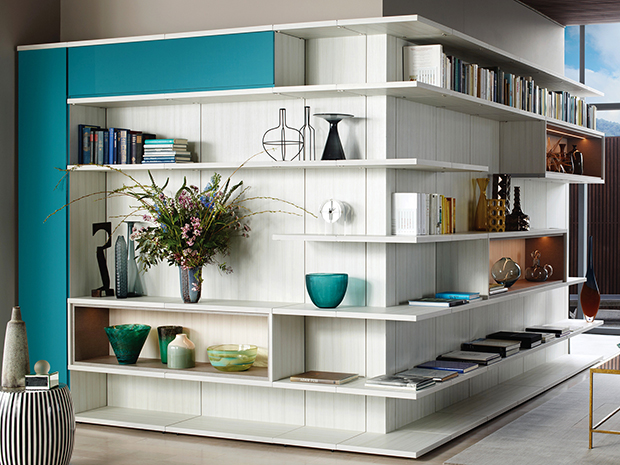
High-gloss acrylic has a smooth and nonporous surface, meaning that dirt does not easily adhere to the material. When cleaning, use only lukewarm water with a few drops of mild dish detergent on a soft, lint-free cloth. The cloth you use should be thoroughly rinsed before use.
Some further words of caution:
- Do not wipe away dust with a dry cloth
- Do not use scouring powders, other abrasives or products that contain oil
- High-gloss acrylic must not come into contact with organic solvents such as thinners, alcohols, fuels, acetone (nail polish remover), benzene or carbon tetrachloride
Leather Door Inserts, Shelves, Cleats, Panels & Pole Covers
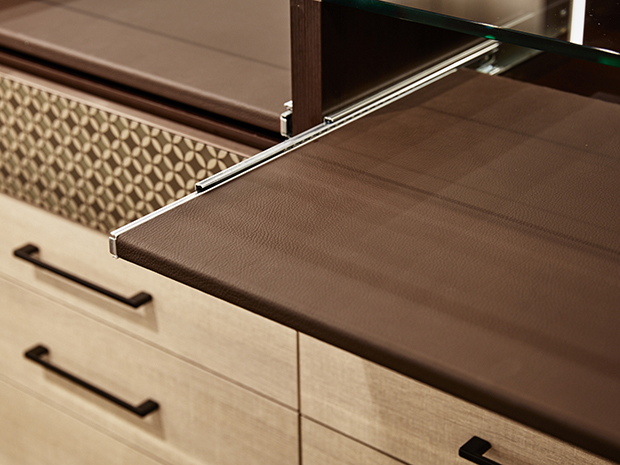
Leather products should be maintained by wiping them clean with a slightly damp cloth. No harsh chemicals or leather conditioners should ever be used on the surfaces. Surface scratches may be treated with shoe polish or a matching furniture leather marker available from fine furniture stores.
Leather is a naturally durable organic material. Our enhanced treatments add to the durability of the product without compromising its inherent luxurious appeal. Over time, a rich patina will develop on our leather products in the same manner as with fine leather furniture.


